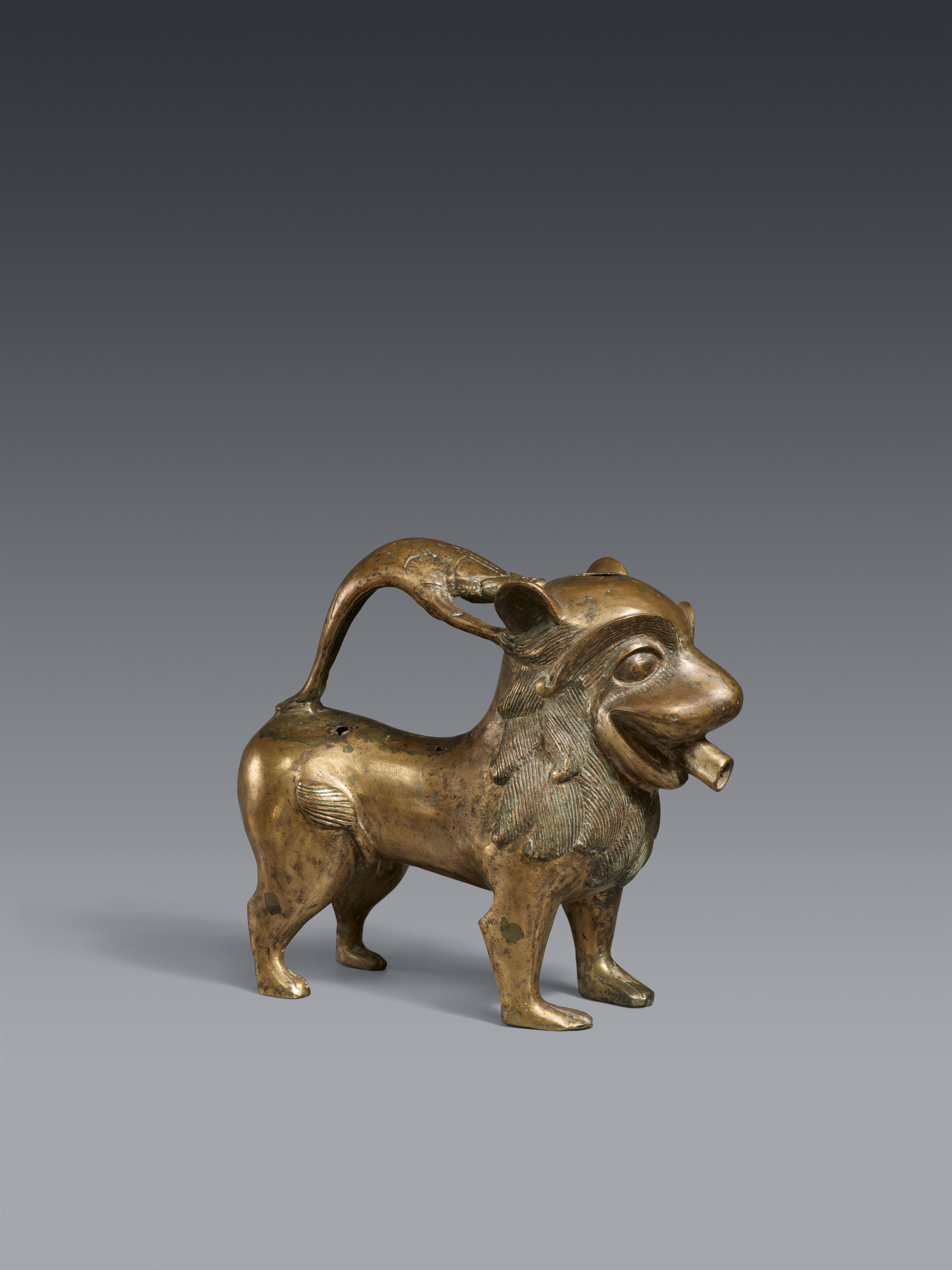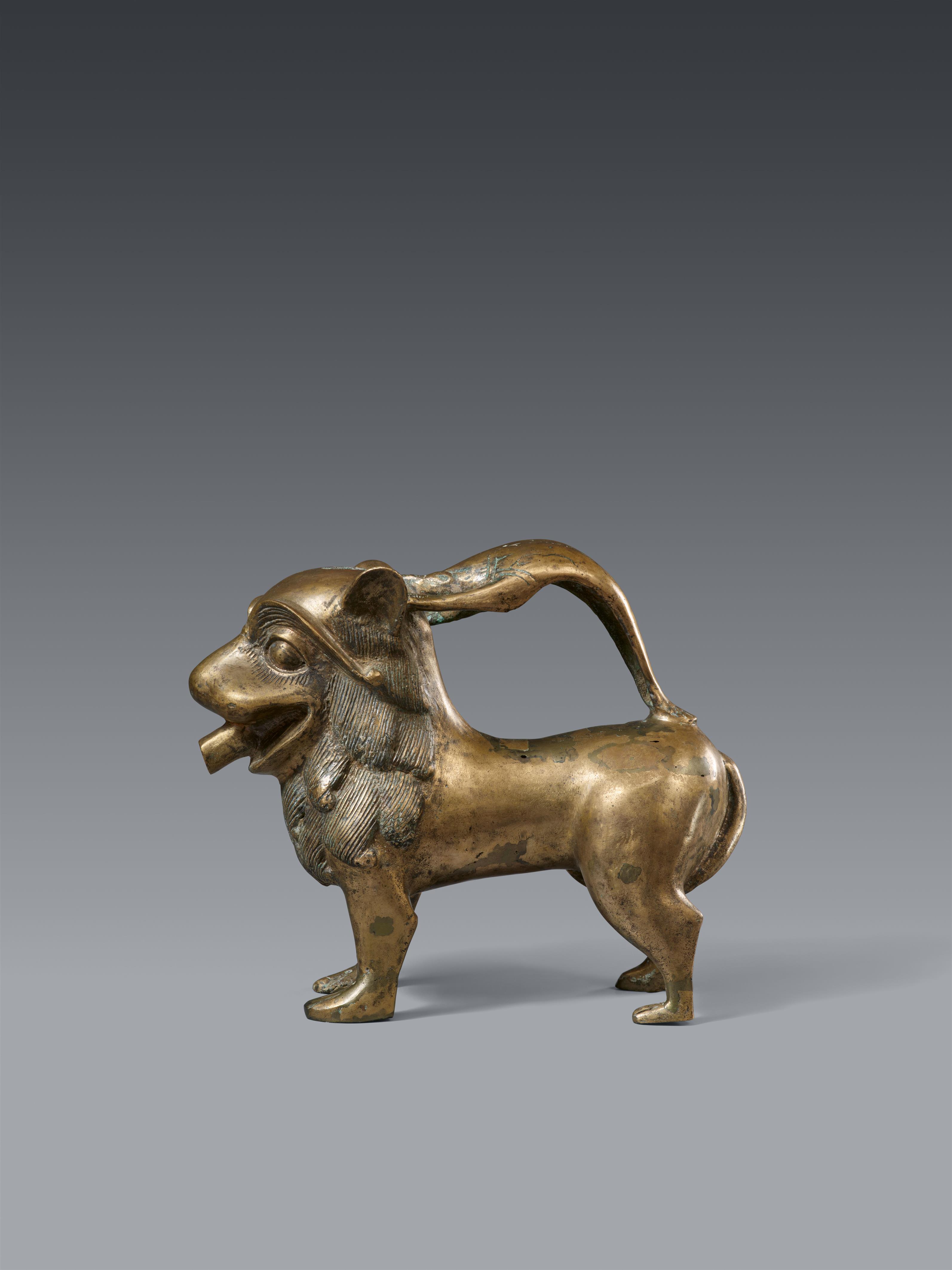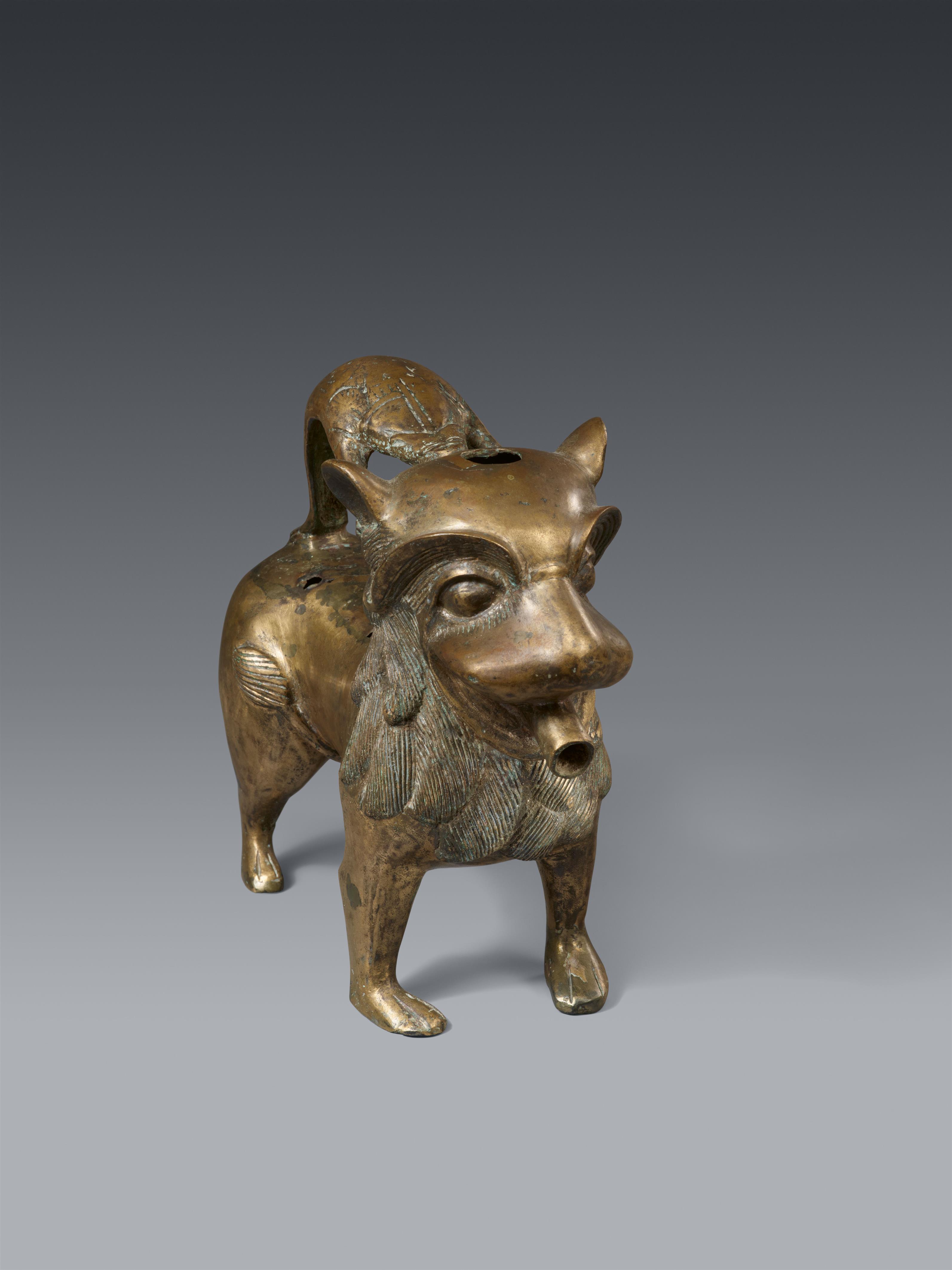North German ca. 1200
A North German bronze aquamanile, around 1200
Cast, engraved, and chased bronze with remnants of gilding. This hollow, thin-walled vessel in the form of a lion was made using lost-wax casting technique and originally served in the liturgical washing of the priest's hands during Mass.
The design of the aquamanile allows it to be grouped together with a series of eleven further lion aquamaniles which the research of Otto von Falke and Erich Meyer (op. cit.) has dated to the time around 1200 and assigned to a north German workshop, most likely in Lübeck. Today, the pieces are housed in various museums, the majority in the Germanisches Nationalmuseum in Nuremberg, the British Museum in London, the National Museum in Copenhagen and the Aachen Cathedral Treasury. X-ray fluorescence analysis carried out in 2021 has shown that this lion, which comes from private ownership, is made from an alloy of bronze, copper, tin and lead and shows no indication being created in the post-Medieval period. The amounts of the various metals used in the alloy also correspond to that of another lion aquamanile from the group of works compiled by Falke and Meyer now housed in the Germanisches Nationalmuseum (inv. no. KG 491, cf. Otto Werner: Analysen mittelalterlicher Bronzen und Messinge. Part IV, Berlin 1981, p. 186, analysis no. 238).
Minor breakages to the back, with small rectangular repairs of the period. A large oval addition to the underside of the body, also of the period. The cap on the upper part of the head lacking, there presumably a small addition to the rim of the opening. Surface abrasions and minor dents. 18.5 x 9 x 21 cm.
Certificate
Artemis Testing Lab, Louisville (USA) 15.12.2021 (X-RAY Fluorescence Report). - Afterlight Inc., 23.11.2022 (3D-CT Scan).
Provenance
Collection of Captain Herbert Willaume Murray (1870-1931), London. - His sale, Christie's, London, December 1st 1908, lot 43. - Acquired there by the art dealer Samuel Willson & Son, Strand, London. - Arnold Broomhall Willson (1871-1961), London. - Acquired from his estate by Frederick Bucher (1886-1971), Rhode Island, New York. - By descent to his daughter Frederica Bucher Morrow Parreno (1915-1998), Rhode Island, New York. - Acquired from her estate in 1998 by the current owner.
Literature
For the comparable aquamaniles see Otto von Falke, Erich Meyer: Romanische Leuchter und Gefässe. Giessgefässe der Gotik, Berlin 1935, p. 60-61 & 110, no. 361-371, pl. 149-151, illus. 337-340 & 343-349.






